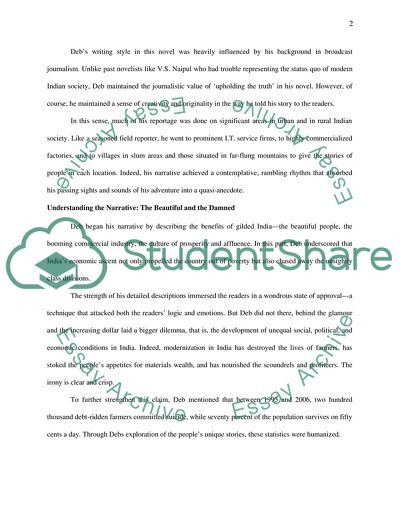Cite this document
(Beautiful and the Damned: Portrait of New India by Siddhartha Deb Book Report/Review Example | Topics and Well Written Essays - 1500 words, n.d.)
Beautiful and the Damned: Portrait of New India by Siddhartha Deb Book Report/Review Example | Topics and Well Written Essays - 1500 words. https://studentshare.org/social-science/1766216-critical-thinking-the-beautiful-and-the-damned-a-portrait-of-the-new-in
Beautiful and the Damned: Portrait of New India by Siddhartha Deb Book Report/Review Example | Topics and Well Written Essays - 1500 words. https://studentshare.org/social-science/1766216-critical-thinking-the-beautiful-and-the-damned-a-portrait-of-the-new-in
(Beautiful and the Damned: Portrait of New India by Siddhartha Deb Book Report/Review Example | Topics and Well Written Essays - 1500 Words)
Beautiful and the Damned: Portrait of New India by Siddhartha Deb Book Report/Review Example | Topics and Well Written Essays - 1500 Words. https://studentshare.org/social-science/1766216-critical-thinking-the-beautiful-and-the-damned-a-portrait-of-the-new-in.
Beautiful and the Damned: Portrait of New India by Siddhartha Deb Book Report/Review Example | Topics and Well Written Essays - 1500 Words. https://studentshare.org/social-science/1766216-critical-thinking-the-beautiful-and-the-damned-a-portrait-of-the-new-in.
“Beautiful and the Damned: Portrait of New India by Siddhartha Deb Book Report/Review Example | Topics and Well Written Essays - 1500 Words”. https://studentshare.org/social-science/1766216-critical-thinking-the-beautiful-and-the-damned-a-portrait-of-the-new-in.


